Temecula Wine Country
20881
20881
20880
20861
Center Lock Nut Wine Cooler
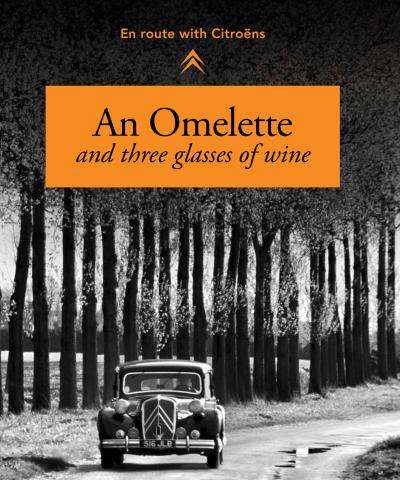
En Route with Citroens
This book is a compilation of 8 outstanding road trips produced for various magazines over the last 20 years. The book combines the beautiful motoring photography of Martyn Goddard with the evocative writing of three excellent motoring journalists, Phil Llewellin, Dale Drinnon and Paul Horrell. Mr Llewellin, who wrote most of the stories, was a very well regarded motoring and travel writer and these stories – journeys or adventures really – are all charmingly told and very accurate in the depth of detail. Several are taken from the iconic classic car magazine Super Car Classics. They recount trips in classic cars, mainly wonderful Citroens. But it is not just about cars, the trips are also about people and places and most importantly, food and wine, as discovered in different parts of France.
The majority of the photographs have never been seen before and are a stunning mix of reportage and beautifully crafted car images. Included are trip notes that give some background to the stories.
A great read for anyone who loves cars, travel, adventure or food and wine in any combination.
California Vines, Wines & Pion
Los Angeles Wine

This narrative represents a many-faceted summary of success. It explains how an unconventional, strong willed and remarkably creative young man became a mechanic. How as an incorrigibly obstinate automobile fan he advanced to the status of an eminently successful racing driver on the international competition scene. And it also describes how this single-minded, highly determined dreamer metamorphosed into a builder of his own racing cars. Furthermore, in accordance with the same verve and determination that enabled him to attain the initial step in Formula-1 as constructor/driver, following a mechanically induced, unfortunate major accident, he continued to pursue his long-time ambition as automobile producer …, and to become an internationally renowned manufacturer and purveyor of exclusive, high-performance luxury automobiles.
It remains to note how it was possible for Peter Monteverdi, the garage owner and sportscar specialist located in a suburb of the Swiss city of Basel, in but a few yearsʼ time to have been able to break into the ranks of well established, world renowned sports- and GT-car manufacturers. What talents and energy, what harbingers of fate had been necessary to have brought this singular Monteverdi career to fruition?
These questions had fascinated the two journalists Roger Gloor and Carl L. Wagner, and together with Peter Monteverdi they arranged to write a story covering his career, which culminated with the publication of the first Monteverdi book in 1980. The American automobile journalist and writer Carl L. Wagner interviewed Peter Monteverdi countless times. The results were formulated in a biography that ranged from a highly unconventional young man who stood on the threshold of a burgeoning race-driver career – that was enhanced by the construction of his own series of MBM racing cars – to the culmination of his plans for the production of a luxurious GT coupe. Roger Gloor, the native Basel automotive journalist and writer, continued the story of Monteverdiʼs lifeʼs work that was characterized by the further development of his own Monteverdi-designated brand up to the date of publication at the above-mentioned time.
Even though he was only 46 years old in 1980, Monteverdi and his marque had already become vital statistics in automotive history. But the Monteverdi story continued onwards from the year 1980. It was furthermore closely entwined with automobile racing, as well as with the production of high-performance-, off-road- and luxury cars. In 1998, much too early, terminal cancer ended Peter Monteverdiʼs adventurous and exciting life.
Paul Berger, Peter Monteverdiʼs companion and heir, as well as the custodian of the Monteverdi heritage, has made it possible for the authors to continue on with the further exciting and diversified developments undertaken by this great Swiss automobile designer and constructor after 1980.
Both authors consider the encounter with Peter Monteverdi as highlight in their professional careers.
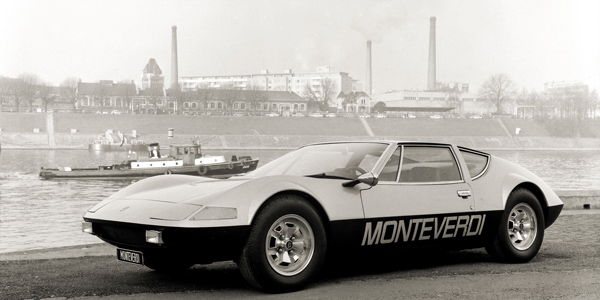
This high-quality leather fibre fabric bound book has 304 pages.
535 photos illustrate technical details of numerous cars and show the life of Peter Monteverdi.
The photos have been taken from the Monteverdi archive and from numerous other sources. They have been completely reprocessed for high quality printing
Watch the documentary HERE
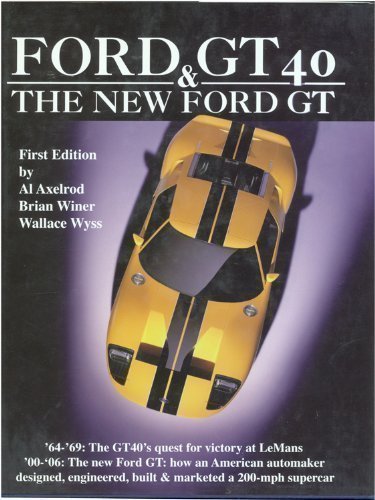
Detailed development history and photos of Ford’s 60’s racing legend, the Ford GT40, and the development and release of the 2005 and 2006 Ford GT.
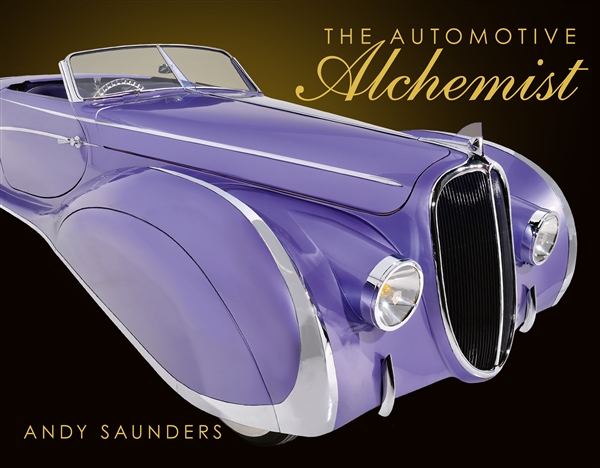
Andy Saunders’ ‘Automotive Alchemist ’ is a roller-coaster ride through the highs and lows of this charismatic man’s life. From the early years of learning the basic skills of cutting and shaping metal then painting and airbrushing, to his mature creations, restorations and the inherent genius of his designs. Andy welcomes us into his workshop and his head: not afraid to express his emotions, as he deconstructs and then rebuilds each vehicle, he lays bare his motivations, inspirations, influences, and passions. Intertwined in the narrative is the work involved in the creation of 60 cars, described here with many detailed photographs.
Forty-two of Andy’s creations now reside in museums and private collections across the globe but the most unusual fate is that of Flat Out, the Guinness Book of Records acclaimed Lowest Car in the World, which is now a coffee table in the foyer of a huge Californian corporation.
The book is not a technical ‘how to create wild custom cars’ manual. Rather it is a celebration of Andy’s joy of creation and his design genius, though tempered by personal traumas and losses. He has, on many occasions, been referred to as the British George Barris, the American “King of Kustomizers.” Unlike many biographies, this book engages the reader with its honesty and humour.
Andy Saunders grew up in Poole on the south coast of England and developed an early relationship with the building and customising of cars. His first project was finished before he was old enough to hold a British driving license.
Since that first project, his journey to become Britain’s leading and most recognisable ‘Car Artist’ has evolved. With his painstaking attention to detail and his knowledge of the styling masters from bygone eras, his creations have always been unique and, occasionally, controversial.
Never shy of turning his ideas into reality or taking unexpected opportunities to fruition, Andy has, on occasions, thrown away the accepted rule book and created some truly amazing vehicles: making a Citroën CX into a road-legal alien craft; turning Ford’s 1958 X-2000 ‘car of the future’ model into a full-sized reality and creating a Cord coupe that the factory would have been proud to call their own.
Andy has three Guinness Book of Records certifications: twice for the ‘lowest car in the world’ and once for the ‘lowest van in the world’ which remains unbeaten and has been approached by film companies and undertaken commissions for major car manufacturers. But mostly he builds whatever has inspired his creative juices from lowriders, Incantation, to shortened Minis, Mini Ha Ha; from restyling a Bentley Mulsanne, which was acclaimed by the Rolls-Royce and Bentley Owners Club as “the most beautiful coachbuilt Bentley to have been built since WWII”, to a 2CV inspired by Picasso – Picasso’s Citroën; and from his drivable version of Bertone’s Lancia Stratos Zero to his Art Deco creation of a rare 1939 Peugeot, Metropolis, inspired by Fritz Lang’s 1927 masterpiece of the same name.
During the past four decades Andy has restored Cord, Pontiac and Rolls Royce vehicles. Rescued and restored the unique and much-maligned 1957 Aurora Safety Sedan and realised an affinity with the great designer Alex Tremulis. Andy’s creations have appeared in exhibitions, on television and in magazines as far afield as Australia, Korea, America, the UK and Europe and many of his vehicles nowadays reside in museums and collections from California to Japan and from Europe to the Middle East.
And so to his latest masterpiece, Déjà: inspired by a 1930’s popular French girls name, some body panels he didn’t want or need and the pinnacle of French coachbuilding, Andy has created this Delahaye, a hand-built steel roadster. This beautiful cross between Joseph Figoni’s 165s and Jacques Saoutchik’s 175 somehow appears to be some eighty-five years late for her debut at the Paris Salon de l’Automobile.

Stock-car racing star, country singer, and sports broadcaster Kyle Petty shares his familial legacy, intertwined with NASCAR’s founding and history, in Swerve or Die―written with Pulitzer Prize-winner Ellis Henican, the New York Times bestselling coauthor of In the Blink of an Eye.
“Born into racing royalty. The only son of NASCAR’s winningest driver ever. The grandson of one of the sport’s true pioneers. The nephew of our very first Hall of Fame engine builder. It’s quite a family to represent, and through it all, I’ve somehow managed to keep being Kyle.”
Kyle Petty won his very first stock-car race, the Daytona ARCA 200, in 1979 when he was eighteen. Hailed as a third-generation professional NASCAR racer, he became an instant celebrity in circles he had been around all his young life. Despite being the grandson and son of racing champions Lee Petty and Richard Petty, Kyle didn’t inherit innate talent. Working in his family’s North Carolina race shop from an early age, he learned all about car mechanics and maintenance long before he got behind the wheel. And although Kyle continued the family business, driving “Petty blue” colored cars emblazoned with his grandfather’s #42―a number once used by Marty Robbins―his career took a different route than his forebears’.
In Swerve or Die: Life at My Speed in the First Family of NASCAR Racing, Kyle chronicles his life on and off the racetrack, presenting his insider’s perspective of growing up throughout the sport’s popular rise in American culture. In between driving and running Petty Enterprises for thirty years, Kyle took some detours into country music, voiced Cal Weathers in Pixar’s Cars 3, and started his annual motorcycle Kyle Petty Charity Ride Across America. And when his nineteen-year-old son Adam, a fourth-generation racing Petty, tragically lost his life on the track, Kyle founded Victory Junction, a camp for children with chronic and serious medical conditions in Adam’s name―with help from Academy Award-winning actor and motorsports enthusiast Paul Newman.
Filled with NASCAR history, stories of his family’s careers, and anecdotes about some of stock-car racing’s most famous drivers, Kyle’s memoir also tackles the sport’s evolution, discussing how welcoming diverse racers, improving car and track safety features, and integrating green technology will benefit NASCAR’s competitors and fans in the future.
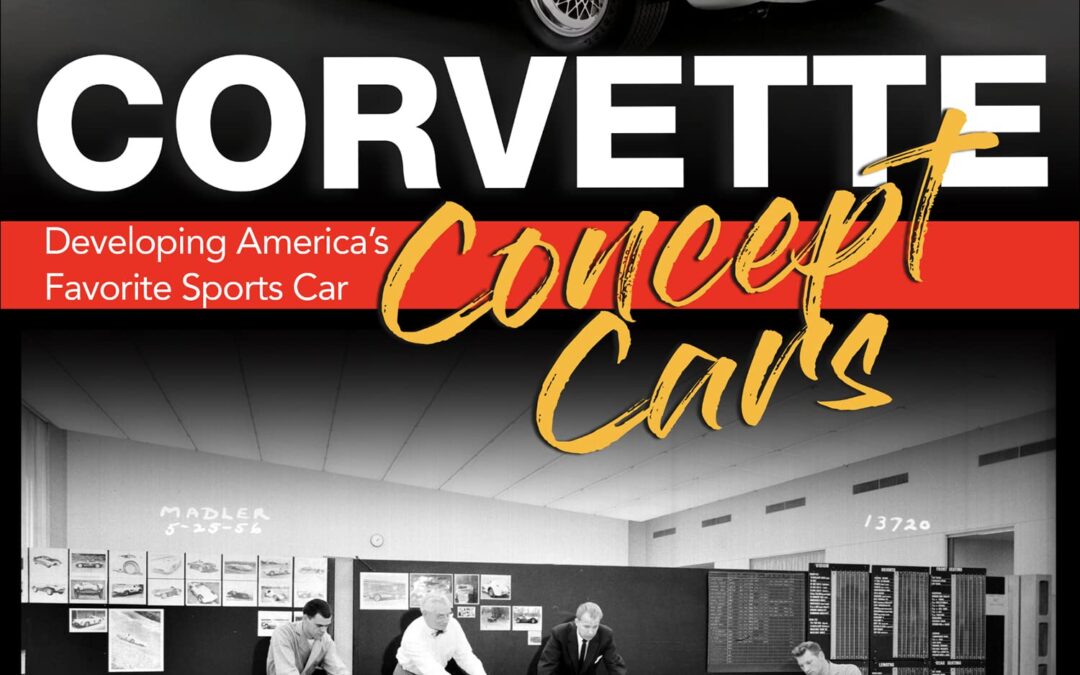
For more than a half century, the Corvette has been celebrated as “America’s sports car” by owners and enthusiasts. Since the first model rolled off the assembly line on June 29, 1953, it has been transformed time and again from a well-intentioned-but-underpowered boulevard cruiser into one of the most iconic sports cars of all time!
How did Harley Earl’s original vision for a two-seat sports car progress through eight distinct generations to become the car that we know and love today? Who were the visionaries responsible for advancing its form and function over the last 70 years? Also, why has the Corvette continued to find commercial success in an ever-changing marketplace when so many other automobiles have come and gone since its creation?
Corvette Concept Cars: Developing America’s Favorite Sports Car answers these questions by delving into the origins of the Chevrolet Corvette and of the countless designers, engineers, drivers, and dreamers responsible for its creation. It explores the personal histories of Corvette’s greatest visionaries (Harley Earl, Zora Arkus-Duntov, and Bill Mitchell) and tells how each of their fates were indelibly intertwined with the rich (and sometimes volatile) history of Chevrolet’s flagship sports car.
This book is an exploration of the Corvette concept cars from the earliest turnstile dream cars and purpose-built racers to the many unique mid-engined concept and research vehicles that preceded the creation of the current production model: the eighth-generation mid-engine Stingray.
Painstakingly researched and written by Corvette historian Scott Kolecki and packed with more than 350 incredible photographs, Corvette Concept Cars: Developing America’s Favorite Sports Car is the quintessential history of the evolution of the Chevrolet Corvette!
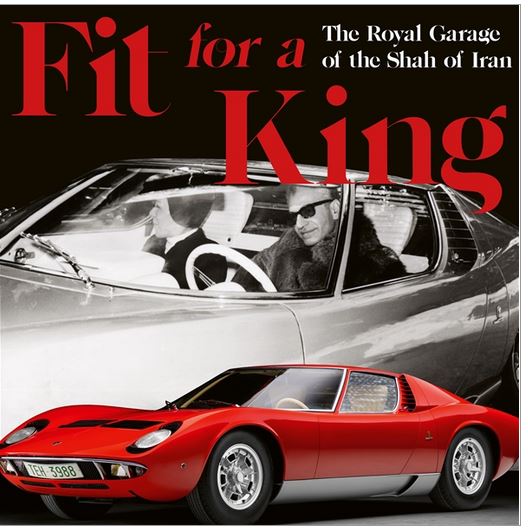
Iran has a monarchical history spanning over 2,500 years. Almost all of Iran’s Kings have had vast unchecked powers as they built, and lost, some of the largest empires in history. These vast powers led to Iran’s Kings being referred to as “Shahanshah” meaning literally the “King of Kings”.
With the advent of the automobile, Iran’s Shahanshahs procured some of the world’s most renowned automobiles for their royal garages starting from the first car to be imported to Iran, a Gardner-Serpollet 10 hp, to the famed Maserati 5000GT “Scia de Persia”, specially-ordered and owned by Iran’s last Shah, Mohammad Reza Shah Pahlavi.
In his broad spanning work, Iranian automotive historian Borzou Sepasi traces the royal garage of each Iranian Shah, starting with Mozaffar ad-Din Shah Qajar in 1900, who despite importing the first car, forbade drivers from going faster than carriages, and all the way up to the 1979 revolution. In an important postscript, the fate of many of the cars covered in the book following the end of monarchical rule in Iran, are shown.
The book also intertwines many of the historical events in Iran with the cars of the period, highlighting the special role these vehicles played. Dalton Watson is proud to present this little-known period of unique automotive history to its readers.
230mm x 280mm

This charming book, packed with unique artwork and engaging photographs, celebrates scooter mania.
In a feast of nostalgia, it takes us through the evolution of the scooter, focusing naturally on all things Lambretta and Vespa, but also covering plenty of obscure and eccentric machinery along the way. Scooter enthusiasm in all its forms receives generous attention, whether as fashion accessory for fifties movie stars, style-conscious transport choice for the Mod generation, or object of worship for today’s retro-loving adherents.
Quotes in the book such as “The scooters, clothes and music — an unforgettable time of my life” and “Exciting, fun and carefree days when anything seemed possible” sum up the enduring appeal of classic scooters. Anyone afflicted with the obsession will adore this book.

The path of Grand Prix racing in America wound through raceways at Sebring, Riverside, Watkins Glen, Long Beach, and finally Caesars Palace in Las Vegas. At each stop, the influence of organized crime seemed no more than a handshake away. But at Caesars the vast crime syndicate appeared deeply involved in the operations of the luxury-branded resort. The Caesars Palace Grand Prix then culminated in an unholy alliance of the world capital of gambling, shadowy figures, and the international czar of Formula One.
During its four-year run of successive Formula One and CART IndyCar events, the race hosted the biggest names in motorsport–Mario Andretti, Bernie Ecclestone, Roger Penske, Chris Pook, Alan Jones, Nelson Piquet, Niki Lauda, Danny Sullivan, Bobby Rahal and Al Unser among them. The podium celebration of the inaugural Grand Prix put the convergence of alleged organized crime influences and auto racing on public display, while the years that followed provided their own curiosities. This book traces the intertwined threads through decades of accounts, extensive interviews, and the files of the FBI.

GIs returning after World War II created an entirely new automotive market niche when they bought surplus Jeeps and began exploring the rugged backcountry of the American West. This burgeoning market segment, which eventually became known as sport utility vehicles (SUVs), numbered about 40,000 units per year with offerings from Jeep, Scout, Toyota, and Land Rover. In 1966, Ford entered the fray with its Bronco, offering increased refinement, more power, and an innovative coil-spring front suspension. The Bronco caught on quickly and soon established a reputation as a solid backcountry performer. In Baja, the legendary accomplishments of racers such as Parnelli Jones, Rod Hall, and Bill Stroppe further cemented the bobtail’s reputation for toughness.
Ford moved upstream with the introduction of the larger Bronco for 1978, witnessing a huge increase in sales for the second-generation trucks. The Twin Traction Beam front end was introduced in the third generation, and further refinements including more aerodynamic styling, greater luxury, and more powerful fuel-injected engines came on board in the generations that followed. Through it all, the Bronco retained its reputation as a tough, versatile, and comfortable rig, both on and off the paved road. With the reintroduction of the Bronco for 2020, Ford is producing a vehicle for a whole new generation of enthusiasts that looks to bring modern styling and performance to the market while building on the 30-year heritage of the first five generations of the Bronco so dearly loved by their owners.
From the development process and details of the first trucks through the 1996 models, author Todd Zuercher shares technical details, rarely seen photos, and highlights of significant models along with the stories of those people whose lives have been intertwined with the Bronco for many years. This book will have new information for everyone and will be a must-have for longtime enthusiasts and new owners alike!

Car photography often evokes the same recycled tropes. Predictably slick, hi-spec images on the front pages of glossy magazines, or huge blow-ups on giant billboards which have one designed aim: to sell a lifestyle. But our relationship with cars is so much more meaningful than these images might suggest. Like the camera, the car has changed the way we explore the world. With cars came road trips, and with road trips came some of the most important photographic documentaries of our time. A car is a vehicle not just for transport but for our hopes, desires and dreams. In Smoke and Mirrors, a selection of world-renowned and up-and-coming photographers come together to pay tribute to the car. From Nick Turpin’s images of ‘donut’ skid marks, Todd Hido’s painterly landscapes taken through wet windscreens and William Green’s shots of sleeping Tokyo taxi drivers, these photographs display cars at their most playful, introspective and meaningful, reminding us that there is more to them than just metal and machinery – for cars are emotionally intertwined with the lives we live.

The life of Derek Bennett and the success of Chevron Cars are inextricably entwined in the Chevron Story. After years eking out a living mending cars in back street garages, Derek rose to become one of the world’s leading builders of racing cars. Chevron is the fairy tale story of how he did it.
Stars such as Alain Prost, Niki Lauda, Brian Redman, James Hunt, Keke Rosberg, Nigel Mansell, Graham Hill, Peter Gethin and Jody Scheckter all drove Chevrons. In his book “Chevron – The Derek Bennett Story” – David Gordon explains how they got on.
After travelling many thousands of miles to trace the people who knew and worked with Derek, motor racing journalist David Gordon tells the Derek Bennett story and that of his brainchild Chevron Cars, charting the contributions of the many people who played a part in the company’s meteoric rise to success, and relating why it all happened the way it did.
Derek Bennett designed and built successful racing cars for 13 years from 1965 until his untimely death in 1978, but another four decades later the appeal of those cars shows no sign of waning.
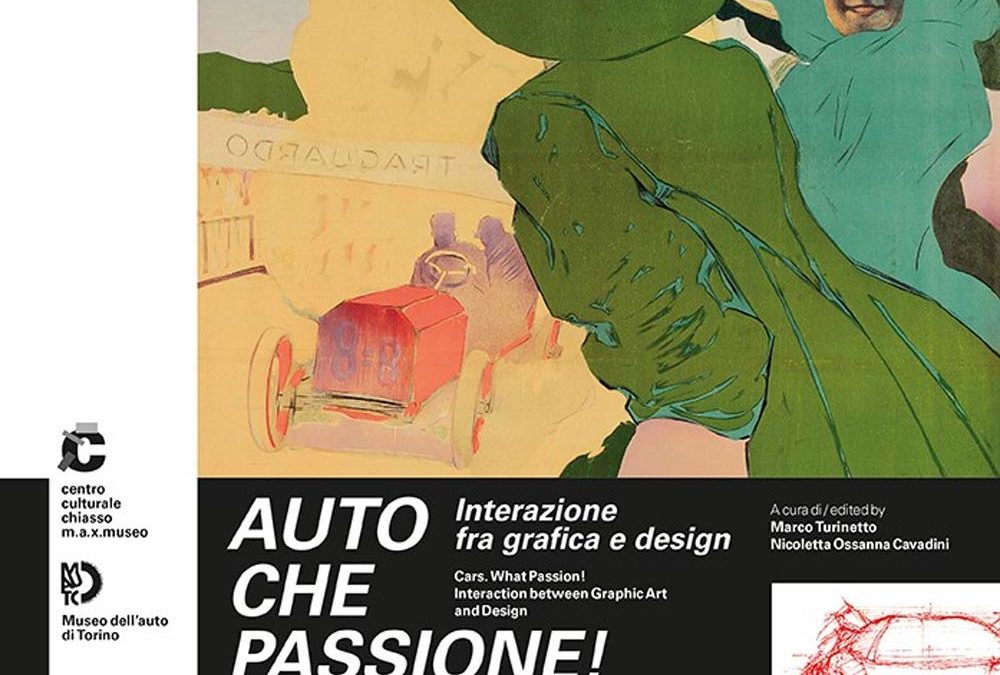
This volume (with contributions by Maria Canella, Marta Mazza, Nicoletta Ossanna Cavadini, Mario Piazza, Marco Turinetto, Uberto Pietra, Paola Masetta and Ilaria Pani) traces a path that ranges from fashion to periodical publishing, the graphic design of posters, leaflets and postcards to printed media communication, where the complexity of the car as a product appears with its many facets and with all its appeal.
It presents an innovative survey of the theme of the car in which graphics and design are entwined with its various historical phases. This guided tour of cars and stylistic tendencies becomes a comprehensive concept of the “automobile civilization”, so much a part of modern culture, which is analysed through the advertising work that car manufacturers commissioned from the greatest designers: Marcello Dudovich, Leopoldo Metlicovitz, Achille Mauzan, Plinio Codognato, Carlo Biscaretti di Ruffia, Aldo Mazza, Marcello Nizzoli, Max Huber, Giulio Confalonieri and Pierluigi Cerri. The texts are accompanied by a rich collection of illustrations.

SOLD OUT
During his lifetime, Brazilian Formula 1 racing champion Ayrton Senna was widely recognized as a leader in his sport, a pioneer in driving technique, a hard racer, and a compassionate man. Above all, he believed that impoverished children should be able to realize their potential. Since his fatal crash during the 1994 San Marino Grand Prix, Senna’s remarkable career and humanitarian outlook have continued to inspire the world. The Ayrton Senna Institute, a fulfillment of his dreams, has helped educate more than 7.8 million Brazilian children since 1994, and its impact only continues to grow.
Now, the Senna family has opened its archives, sharing photographs of private moments at home and at the racetrack. Additionally, an assortment of treasured ephemera from Senna’s life is included in 13 beautiful envelopes. Readers can pull out and examine realistic replicas of his baptism certificate, handwritten letters and race agendas, a keepsake formal photo, autographed team stickers, and more than 20 other special items.
The book’s striking imagery forms a focal point around which bold design and compelling narrative intertwine. In exclusive new interviews, Senna’s family and teammates share personal anecdotes and favorite memories. Fully illustrated and uniquely interactive, Ayrton Senna: Memories and Mementoes from a Life Lived at Full Speed will be a cherished addition to any fan’s collection.